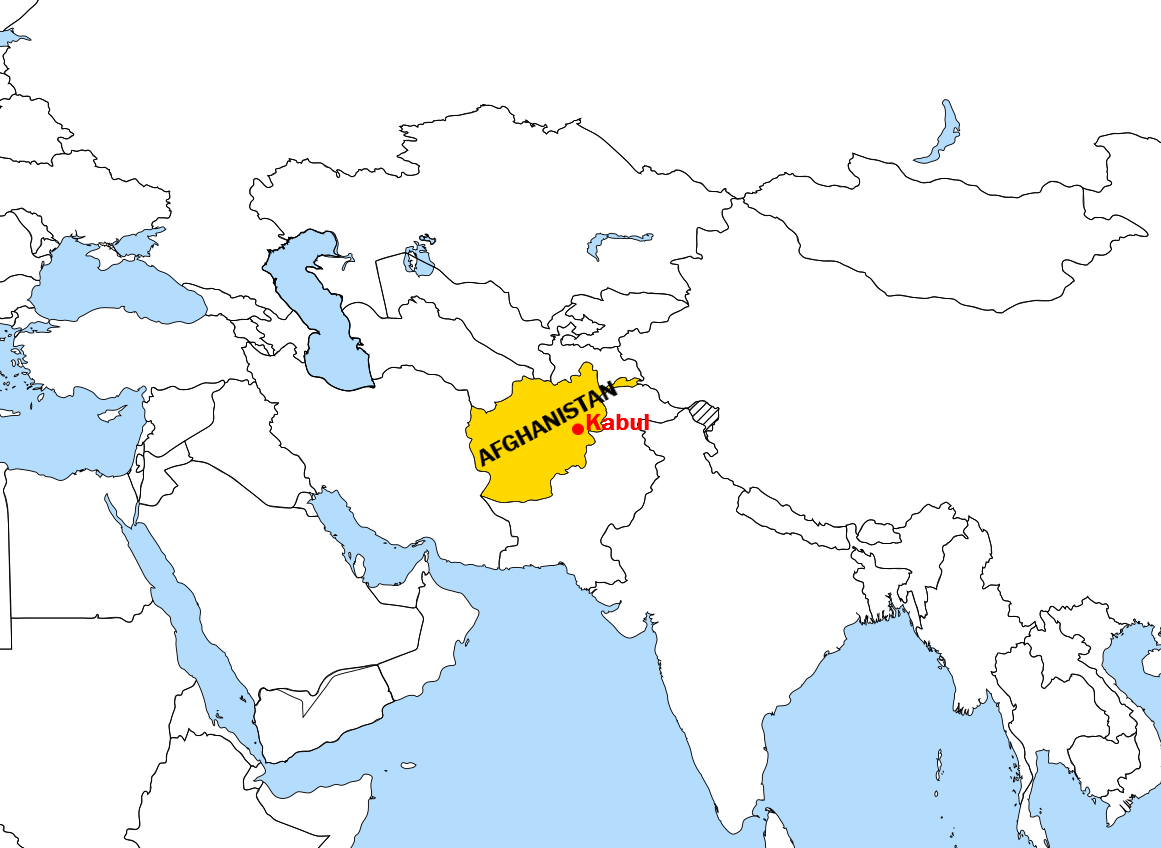|
Nasrids (Sistan)
The Nasrid dynasty, also referred to as the ''Later Saffarids of Seistan'' or the ''Maliks of Nimruz'', was an Iranian Sunni dynasty that ruled Sistan in the power vacuum left by the collapse of the Ghaznavid Empire and until the Mongol invasion of Central Asia. The Nasrids were a branch of the Saffarid dynasty, and the establishment of the Nasrid Kingdom at Nimruz in 1068 until its dissolution in 1225 represents a transient resurgence of Saffarid rule in Sistan. The kingdom was established by Tadj al-Din I Abu l-Fadl Nasr who was the Malik of Sistan under the Ghaznavids. Nasrid maliks ruled intermittently as sovereigns or vassals of larger neighboring powers, including the Seljuks, the Ghurids, and the Khwarezmians. After the dissolution of the kingdom by Inaltigin Khwarazmi in the wake of the Mongol invasion, the region was ruled by a third dynasty of Saffarids, the Mihrabanids. Nasrid maliks See also *Saffarids *Mihrabanids *Iranian Intermezzo *History of Afghanistan ... [...More Info...] [...Related Items...] OR: [Wikipedia] [Google] [Baidu] |
Middle Ages
In the history of Europe, the Middle Ages or medieval period lasted approximately from the late 5th to the late 15th centuries, similar to the post-classical period of global history. It began with the fall of the Western Roman Empire and transitioned into the Renaissance and the Age of Discovery. The Middle Ages is the middle period of the three traditional divisions of Western history: classical antiquity, the medieval period, and the modern period. The medieval period is itself subdivided into the Early, High, and Late Middle Ages. Population decline, counterurbanisation, the collapse of centralized authority, invasions, and mass migrations of tribes, which had begun in late antiquity, continued into the Early Middle Ages. The large-scale movements of the Migration Period, including various Germanic peoples, formed new kingdoms in what remained of the Western Roman Empire. In the 7th century, North Africa and the Middle East—most recently part of the Eastern Ro ... [...More Info...] [...Related Items...] OR: [Wikipedia] [Google] [Baidu] |
Saffarid Dynasty
The Saffarid dynasty ( fa, صفاریان, safaryan) was a Persianate dynasty of eastern Iranian peoples, Iranian origin that ruled over parts of Persia, Greater Khorasan, and eastern Makran from 861 to 1003. One of the first indigenous Persians, Persian dynasties to emerge after the Muslim conquest of Persia, Islamic conquest, the Saffarid dynasty was part of the Iranian Intermezzo. The dynasty's founder was Ya'qub bin Laith as-Saffar, who was born in 840 in a small town called Karnin (Qarnin), which was located east of Zaranj and west of Bost, in what is now Afghanistan. A native of Sistan and a local ''ayyār'', Ya'qub worked as a coppersmith (''ṣaffār'') before becoming a warlord. He seized control of the Sistan region and began conquering most of Iran and Afghanistan, as well as parts of Pakistan, Tajikistan and Uzbekistan. The Saffarids used their capital Zaranj as a base for an aggressive expansion eastward and westward. They first invaded the areas south of the Hindu Ku ... [...More Info...] [...Related Items...] OR: [Wikipedia] [Google] [Baidu] |
List Of Sunni Muslim Dynasties
The following is a list of Sunni Muslim dynasties. Asia Middle East Arabian Peninsula * Banu Wajih (926–965) *Sharif of Mecca (967–1925) * Al Uyuniyun (1076–1253) *Sulaymanids (1063–1174) *Mahdids (1159–1174) *Kathiri (Hadhramaut) (1395–1967) * Al-Jabriyun (1417–1521) *Banu Khalid (1669–1796) *Al Qasimi (Ras al Khaymah) (1727–present) *House of Saud (Saudi Arabia) (1744–present) *House of Al-Sabah (Kuwait) (1752–present) *Al Nahyan family (Abu Dhabi) (1761–present) *Al Qasimi (Sharjah) (18th century–present) *Al Mualla (Umm al-Quwain) (1775–present) *Al Khalifa family (Bahrain) (1783–present) *Mahra Sultanate (18th century–1967) *Al Nuaimi (Ajman) (1816–present) *House of Thani (Qatar) (1825–present) *Al Maktoum (Dubai) (1833–present) * Al Rashid (1836–1921) *Al Sharqi (Fujairah) (1876–present) *Qu'aiti (1902–1967) *Emirate of Beihan (1903–1967) *Lower Yafa (19th century–1967) *Upper Yafa (19th century–1967) Iran and Caucasus ... [...More Info...] [...Related Items...] OR: [Wikipedia] [Google] [Baidu] |
History Of Afghanistan
The history of Afghanistan as a State (polity), state began in 1823 as the Emirate of Afghanistan after the exile of the Durrani dynasty, Sadozai monarchy to Herat (1793-1863), Herat. The Sadozai monarchy ruled the Afghan Durrani Empire, considered the founding state of modern Afghanistan. The written recorded history of the land presently constituting Afghanistan can be traced back to around 500 BCE when the area was under the Achaemenid Empire, although evidence indicates that an advanced degree of urbanisation, urbanized culture has existed in the land since between 3000 and 2000 BCE. Bactria dates back to 2500 BCE. The Indus Valley civilisation stretched up to large parts of Afghanistan in the north. Alexander the Great and his Ancient Macedonians, Macedonian army arrived at what is now Afghanistan in 330 BCE after Achaemenid Empire#Fall of the empire, the fall of the Achaemenid Empire during the Battle of Gaugamela. Since then, many empires have established capitals in Afghan ... [...More Info...] [...Related Items...] OR: [Wikipedia] [Google] [Baidu] |
Iranian Intermezzo
The term Iranian Intermezzo, or Persian Renaissance, represents a period in history which saw the rise of various native Iranian Muslim dynasties in the Iranian Plateau after the 7th-century Muslim conquest of Iran and the fall of Sasanian Empire. The term is noteworthy since it was an interlude between the decline of Abbāsid rule and power by Arabs and the "Sunni Revival" with the 11th-century emergence of the Seljuq Turks. The Iranian revival consisted of Iranian support based on Iranian territory and most significantly a revived Iranian national spirit and culture in an Islamic form. The Iranian dynasties and entities which comprise the Iranian Intermezzo are the Tahirids, Saffarids, Sajids, Samanids, Ziyarids, Buyids and Sallarids. According to the historian Alison Vacca (Cambridge University Press, 2017), the Iranian Intermezzo "in fact includes a number of other Iranian, mostly Kurdish, minor dynasties in the former caliphal provinces of Armenia, Albania, and Azerbaijan" ... [...More Info...] [...Related Items...] OR: [Wikipedia] [Google] [Baidu] |
Saffarids
The Saffarid dynasty ( fa, صفاریان, safaryan) was a Persianate dynasty of eastern Iranian origin that ruled over parts of Persia, Greater Khorasan, and eastern Makran from 861 to 1003. One of the first indigenous Persian dynasties to emerge after the Islamic conquest, the Saffarid dynasty was part of the Iranian Intermezzo. The dynasty's founder was Ya'qub bin Laith as-Saffar, who was born in 840 in a small town called Karnin (Qarnin), which was located east of Zaranj and west of Bost, in what is now Afghanistan. A native of Sistan and a local ''ayyār'', Ya'qub worked as a coppersmith (''ṣaffār'') before becoming a warlord. He seized control of the Sistan region and began conquering most of Iran and Afghanistan, as well as parts of Pakistan, Tajikistan and Uzbekistan. The Saffarids used their capital Zaranj as a base for an aggressive expansion eastward and westward. They first invaded the areas south of the Hindu Kush, and then overthrew the Tahirid dynasty, annexing K ... [...More Info...] [...Related Items...] OR: [Wikipedia] [Google] [Baidu] |
Nasrid Dynasty
The Nasrid dynasty ( ar, بنو نصر ''banū Naṣr'' or ''banū al-Aḥmar''; Spanish: ''Nazarí'') was the last Muslim dynasty in the Iberian Peninsula, ruling the Emirate of Granada from 1230 until 1492. Its members claimed to be of Arab origin. Twenty-three emirs ruled Granada from the founding of the dynasty in 1230 by Muhammad I of Granada, Muhammad I until 2 January 1492, when Muhammad XII of Granada, Muhammad XII surrendered all lands to Queen Isabella I of Castile. Today, the most visible evidence of the Nasrid dynasty is part of the Alhambra palace complex built under their rule. Background The dynasty founded by Muhammad I of Granada held a territory that included Granada, Province of Jaén (Spain), Jaén, Almería, and Málaga. Valencia, Játiva, and Jaén were conquered by Christians during the campaigns of the Reconquista and for the most part, the Nasrids were made into tribute-paying vassals from 1243. Granada continued as a center of Islamic culture. The N ... [...More Info...] [...Related Items...] OR: [Wikipedia] [Google] [Baidu] |
Mihrabanids
The Mihrabanid dynasty was a Muslim dynasty that ruled Sistan (or Nimruz) from 1236 until the mid-16th century. It was the third indigenous Muslim dynasty of Sistan, having been preceded by the Saffarid and Nasrid dynasties. Overview Most of what is known about the Mihrabanids comes from two sources. The first, the ''Tarikh-i Sistan'', was completed in the mid-14th century by an unknown chronologist and covers the first hundred years of the dynasty's history. The other, the ''Ihya' al-muluk'', was written by the 17th century author Malik Shah Husayn ibn Malik Ghiyath al-Din Muhammad and covers the entire history of the Mihrabanids' rule of Sistan. The Mihrabanids used the title of malik during their rule of Sistan. A malik could inherit the throne or be appointed by the nobles and military commanders. Their capital was generally the city of Shahr-i Sistan. Outside of the capital, the Mihrabanids frequently had problems asserting their authority over the outer towns of the provi ... [...More Info...] [...Related Items...] OR: [Wikipedia] [Google] [Baidu] |
Khwarezmian Empire
The Khwarazmian or Khwarezmian Empire) or the Khwarazmshahs ( fa, خوارزمشاهیان, Khwārazmshāhiyān) () was a Turko-Persian Sunni Muslim empire that ruled large parts of present-day Central Asia, Afghanistan, and Iran in the approximate period of 1077 to 1231, first as vassals of the Seljuk Empire and the Qara Khitai (Western Liao dynasty), and later as independent rulers, up until the Mongol conquest in the 13th century. It is estimated that the empire spanned an area of 2.3 million square kilometers to 3.6 million square kilometers effectively making it one of the largest land empires in history. In the beginning of the 13th century, the empire was the greatest power in the Muslim world. The empire, which was modelled on the preceding Seljuk Empire, was defended by a huge cavalry army composed largely of Kipchak Turks. However, in 1219, the Mongols under their ruler Genghis Khan invaded the Khwarazmian Empire, successfully conquering the whole of it in just t ... [...More Info...] [...Related Items...] OR: [Wikipedia] [Google] [Baidu] |
Ghurids
The Ghurid dynasty (also spelled Ghorids; fa, دودمان غوریان, translit=Dudmân-e Ğurīyân; self-designation: , ''Šansabānī'') was a Persianate dynasty and a clan of presumably eastern Iranian Tajik origin, which ruled from the 10th-century to 1215. The Ghurids were centered in the Ghor of present-day central Afghanistan, where they initially started out as local chiefs. They gradually converted to Sunni Islam from Buddhism after the conquest of Ghor by the Ghaznavid ruler Mahmud of Ghazni in 1011. The dynasty ultimately overthrew the Ghaznavid Empire when Muhammad of Ghor conquered the last Ghaznavid principality of Lahore in 1186 from Khusrau Malik. The Ghurids initially ruled as vassals of the Ghaznavids and later of the Seljuks. However, during the early twelfth century the long-standing rivalry between the Seljuks and Ghaznavids created a power vacuum in Khurasan which the Ghurids took advantage of and began their territorial expansion. Ala al-Din Husayn la ... [...More Info...] [...Related Items...] OR: [Wikipedia] [Google] [Baidu] |




